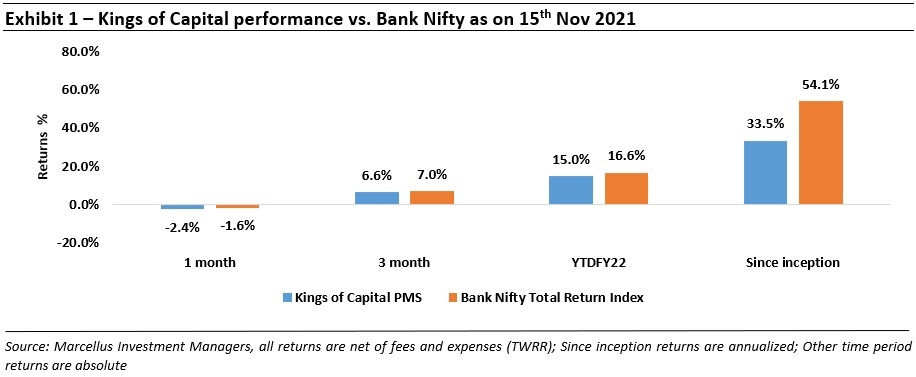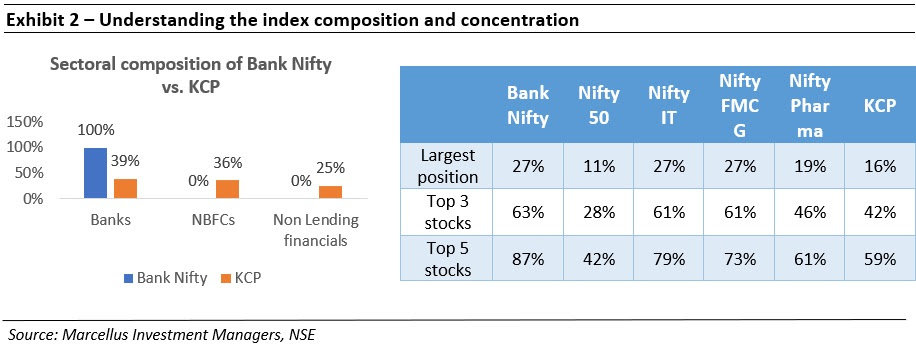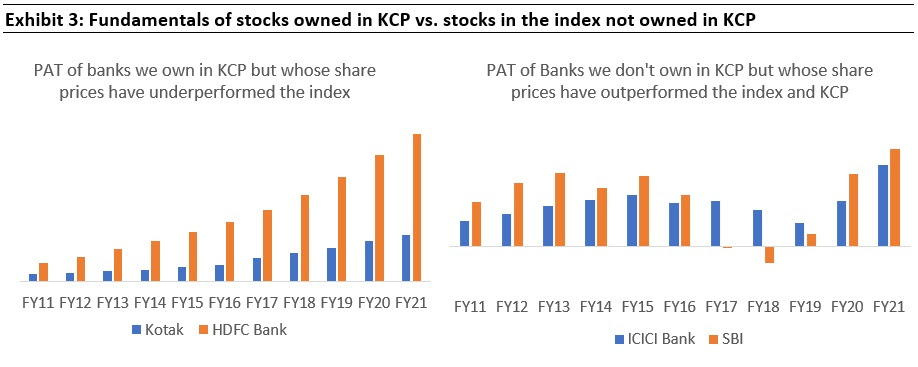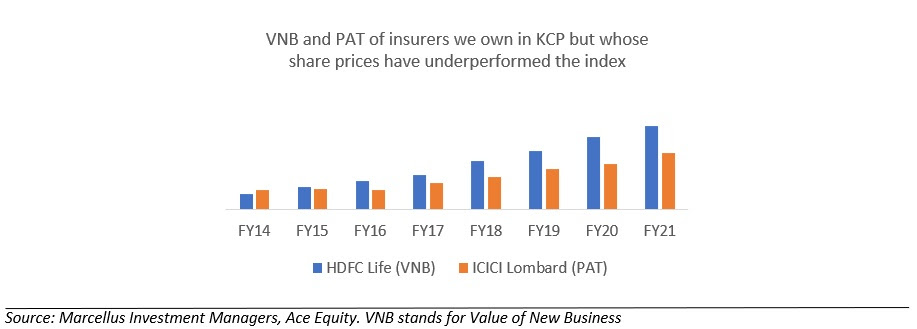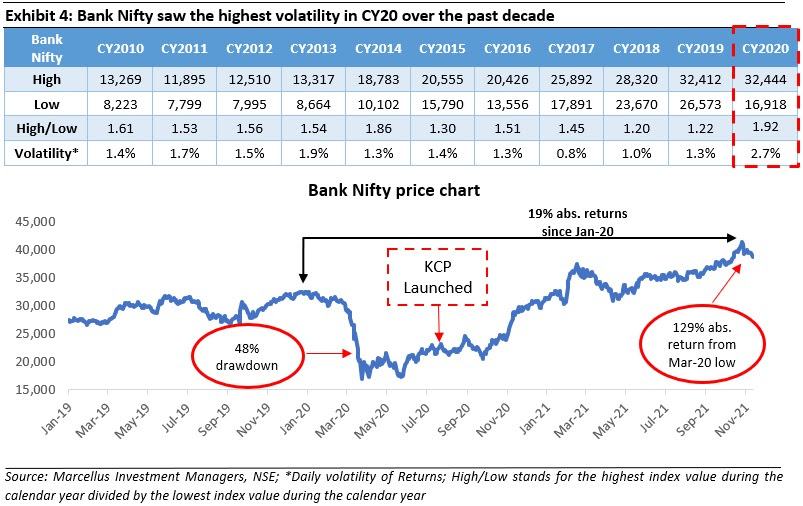Since its inception about fifteen months ago, the Kings of Capital Portfolio (KCP) has delivered annualized returns of 34% vs. 54% for the Bank Nifty. The underperformance of the KCP portfolio is a factor of: (i) fund composition vs. that of the index – Bank Nifty consists of only banks vs. KCP has an allocation of only ~40% to banks; (ii) stock selection i.e. we have avoided turnaround stories; and (iii) the decade high volatility during the past year which saw a 48% drawdown for the Bank Nifty and then a recovery to the original highs all within a period of 12 months. In this newsletter we cover these three aspects and the fundamentals of the largest detractors of relative share price performance of the KCP portfolio (i.e. HDFC Bank, Kotak Bank, HDFC life and ICICI Lombard).
Performance update of the live fund
The key objective of our “Kings of Capital” strategy is to own a portfolio of 10 to 14 high quality financial companies (banks, NBFCs, life insurers, general insurers, asset managers, brokers) that have good corporate governance, prudent capital allocation skills and high barriers to entry. By owning these high-quality financial companies, we intend to benefit from the consolidation in the lending sector and the financialization of household savings over the next decade. The latest performance of our PMS is shown in the chart below.
|
Disclaimer
Marcellus Investment Managers is regulated by the Securities and Exchange Board of India as a provider of Portfolio Management Services and as an Investment Advisor.
The information provided on this Newsletter does not, and is not intended to, constitute investment advice; instead, all information, content, and materials available on this newsletter are for general informational purposes only. Information on this website may not constitute the most up-to-date information. The enclosed material is neither investment research, nor investment advice. The contents and information in this document may include inaccuracies or typographical errors and all liability with respect to actions taken or not taken based on the contents of this Newsletter are hereby expressly disclaimed. The content on this Newsletter is provided "as is;" no representations are made that the content is error-free.
No reader, user, or browser of this Newsletter should act or refrain from acting on the basis of information on this Newsletter without first seeking independent advice in that regard. Use of, and access to, this website or any of the links or resources contained within the site do not create an portfolio manager -client relationship between the reader, user, or browser and website authors, contributors and their respective employers. The views expressed at, or through, this site are those of the individual authors writing in their individual capacities only.

